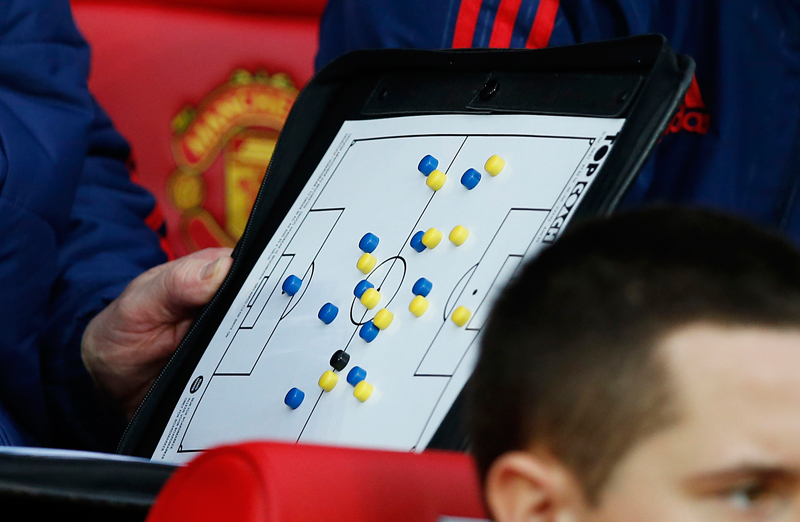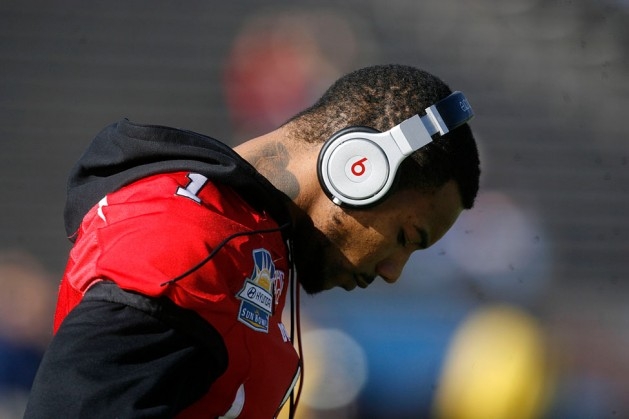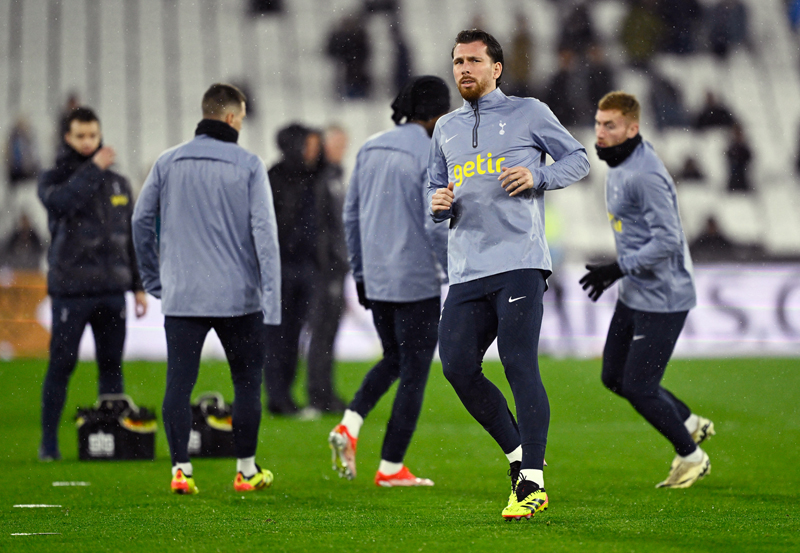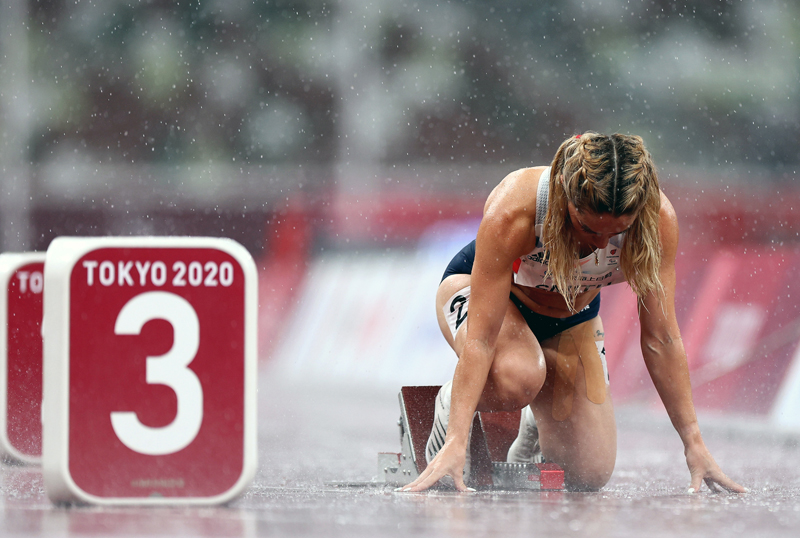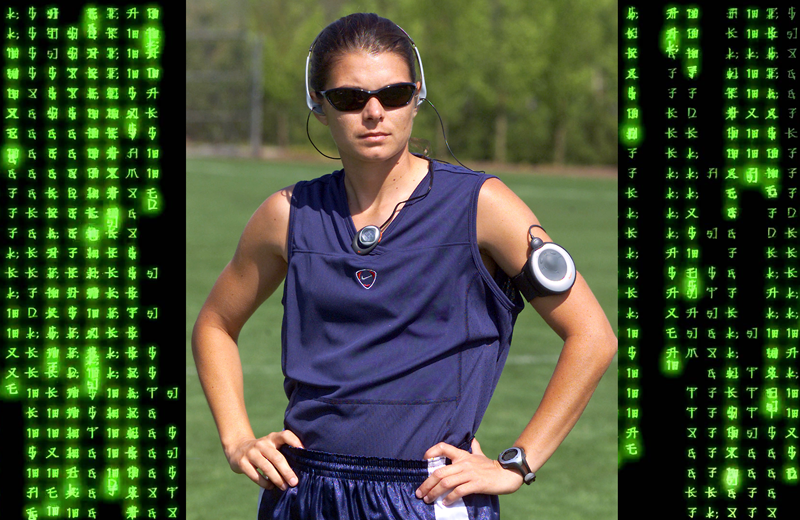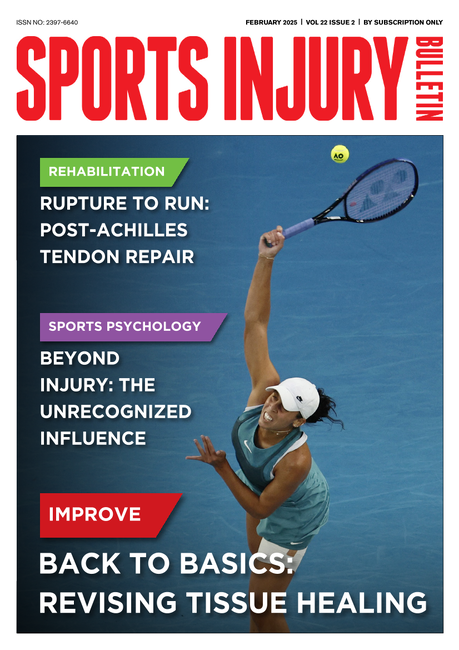Performance profiling: an essential tool for aspiring athletes
Professor Adam Nicholls explains the concept of performance profiling, and how it can be utilised help you achieve your performance goals
Many athletes experience instances in their sporting career where their performance levels stagnate and they are unable to make improvements, no matter what they do. In this article, we will outline a method of overcoming performance stagnation or preventing it from a occurring using a tool that is widely used among sport psychology practitioners – the ‘performance profile’.
What is the performance profile?
The renowned clinical psychologist, Richard Butler developed the performance profile to enhance athlete’s self-awareness regarding the characteristics that facilitate successful performanceThe performance profile: Developing elite performance, London: British Olympic Association Publishers, 1989. As such, performance profiling a method of allowing athletes to understand what qualities are needed to be successful in their sport. In particular, athletes can use this information to help develop training schedules in the areas in they could improve on. Furthermore, athletes can use the performance profile in conjunction with their coaching team to help enhance their performance.
Benefits of performance profiling
Performance profiling has been researched extensively over the last 20 years or so. In a 2011 study, researchers from the University of Portsmouth reviewed the literature and identified numerous benefits (see table 1). The outcome of the benefits alluded to in table 1, often results in enhanced performance! A crucial facet of the performance profile however is that it has to be individualised. It is more effective and meaningful if you create your own performance profile.
Briana Scurry and performance profiling

TABLE 1. THE BENEFITS OF PERFORMANCE PROFILING
| Helps athletes identify the qualities that are associated with successful performances in their chosen sport. |
| Helps athletes identify their strengths and weaknesses. |
| Helps athletes understand what is required to be successful in his or her chosen sport. |
| Enhances an athlete’s motivation, if a performance profile is completed at least three times within a six week period. |
| Allows athletes to monitor their own progress. |
| Facilitates a discussion between the coach and athlete |
| Encourages athletes to take responsibility for their development. |
| Helps athletes set new and challenging goals. |
| Helps athletes set action points, which identify which goals will be achieved. |
| Helps athletes identify barriers, which may stop them from achieving their targets. |
How to profile
Performance Profiling is a 4-stage process, which involves identifying the qualities required to be successful in your sport:
- Stage 1: Ranking and defining the most important qualities
- Stage 2: Plotting your own performance profile
- Stage 3: Generating action points
- Stage 4: Identifying barriers
In this article, I will take you through the entire process, so that you can complete your own performance profile, and I will provide you with examples for each stage.
Stage 1: Identifying the most important qualities
In stage 1, you list the most important qualities that would help you be successful in your sport. This may vary from sport to sport, so there might be subtle differences between a runner who specialises in 10k runs compared to an ultramarathon runner. This is why it is important to generate your own individualised performance profile. In Stage 1, you are instructed to identify qualities from four different categories (physical, technical, tactical, and psychological). See table 2 for an example of triathlete’s completed table.
TABLE 2 EXAMPLE OF A TRIATHLETES COMPLETED TABLE FOR STAGE 1
| Physical | Technical | Tactical | Psychological |
|---|---|---|---|
| Stamina | Arm swing when running | Taking control of races | Coping skills |
| Speed for sprint finish | Exiting water | Avoiding trouble when in open water | Mental toughness |
| Robustness | Transition phases | Avoiding trouble when on bike | Motivation |
| Core strength | Sighting technique | Making the correct decisions | Concentration |
| Flexibility | Correct head-lift when swimming | Judging pace | Determination |
| Arm carriage when running | Problem-solving | Focus | |
| Foot strike when running | |||
| Posture when running |
Now it’s your turn! Please list the physical, technical, tactical, and psychological qualities that you believe are required to be successful in your sport. It is important that that you complete table 2 as honestly as possible and it should reflect your own opinions.
TABLE 3 COMPLETING YOUR OWN STAGE 1 TABLE TO IDENTIFY THE MOST IMPORTANT QUALITIES
| Physical | Technical | Tactical | Psychological |
|---|---|---|---|
Stage 2
Stage 2 involves two distinct processes:
- Process 1 - Firstly, you should rank the 12 most important qualities that you identified in Stage 1. Quality 1 is the most important, whereas quality 12 is the least important quality of the 12 that you have listed – assuming you listed 12 or more qualities. Sometimes athletes may struggle to think of more than 12 qualities, but they still rank the qualities in order of importance, whether they have identified 10 qualities or only five qualities.
- Process 2 - Now write down what each quality means. Some athletes might find this difficult, but it is important that you write down the meaning of the quality so that there is no confusion at a later date. Please see table 4 for an example of a stage 2 completion.
TABLE 4 RANKING AND IDENTIFYING QUALITY MEANINGS
| Rank | Quality | Meaning |
|---|---|---|
| 1 | Stamina | Being able to go for a long time and maintaining a good pace |
| 2 | Problem-solving | Dealing with issues that occur in races, such as competitors making a break |
| 3 | Concentration | Being focused on the task at hand and not letting my mind drift |
| 4 | Sighting technique when swimming | Making sure that sufficient information is viewed and then computed |
| 5 | Transition | Going from the swim to bike and then bike to run in a smooth and time effective manner |
| 6 | Foot-strike | Striking the ground with the ball of the foot |
| 7 | Motivation | Turning up to training and races wanting to give my best |
| 8 | Coping | Deploying strategies that help me reduce of get rid of stress, so that I feel calmer |
| 9 | Arm carriage when running | Hands moving down to the hip and back to shoulder height, in a smooth and controlled action |
| 10 | Taking control of races | Making the right decisions regarding when to dominate and when to hold back |
| 11 | Exiting the water after swim | Leaving the water and getting to the bike without falling over, in a time efficient manner |
| 12 | Flexibility | Range of motion in my joints, particularly my shoulders |
Now it’s your turn. Please complete table 4b and rank order the 12 most important qualities. Then write down what each quality means to you. Please note, that if you did not identify 12 qualities or more, rank the qualities that you did identify, with 1 being the most important.
TABLE 4B YOUR OWN RANK ORDER AND MEANING
| Rank | Quality | Meaning |
|---|---|---|
| 1 | ||
| 2 | ||
| 3 | ||
| 4 | ||
| 5 | ||
| 6 | ||
| 7 | ||
| 8 | ||
| 9 | ||
| 10 | ||
| 11 | ||
| 12 |
Stage 3: Identifying the most important qualities
The next stage involves creating a performance profile, which is a visual representation of the 12 qualities you have identified. Stage 3 also contains three processes. Firstly, you write down the qualities you identified in stage 2 of the performance profile. Secondly, you then rate your ability out of 10. A score of 10 indicates that you cannot improve in a particular area, whereas a score of 1 suggests that you have much room for improvement. See figure 1 for an example of a completed performance profile.
FIGURE 1 EXAMPLE OF A COMPLETED PERFORMANCE PROFILE
| Quality | Ratings | #colspan# | #colspan# | #colspan# | #colspan# | #colspan# | #colspan# | #colspan# | #colspan# | #colspan# |
|---|---|---|---|---|---|---|---|---|---|---|
| 1 | 2 | 3 | 4 | 5 | 6 | 7 | 8 | 9 | 10 | |
| Stamina | --- | --- | --- | --- | --- | |||||
| Problem-solving | --- | --- | --- | --- | --- | --- | ||||
| Concentration | --- | --- | ||||||||
| Sighting technique when swimming | --- | |||||||||
| Sighting technique when swimming | --- | --- | ||||||||
| Foot-strike | --- | --- | --- | |||||||
| Motivation | --- | --- | --- | --- | --- | --- | --- | --- | --- | |
| Coping | --- | --- | --- | |||||||
| Arm carriage when running | --- | |||||||||
| Taking control of races | --- | |||||||||
| Exiting the water after swim | --- | --- | ||||||||
| Flexibility | --- | --- | --- | --- | --- | --- | --- | --- | --- | --- |
The third process involves you indicating where you would like to be. For example, you state where you would like to be in a month, three months, the end of the season, or within 12 months. It is up to you, but it is important that you set a specific time frame. See figure 2 for an example. In figure 2, the athlete’s scores currently are in blue, whereas the targets for 12 months are in red.
FIGURE 2 WHERE YOU ASPIRE TO BE WITHIN 12 MONTHS
| Quality | Ratings | #colspan# | #colspan# | #colspan# | #colspan# | #colspan# | #colspan# | #colspan# | #colspan# | #colspan# |
|---|---|---|---|---|---|---|---|---|---|---|
| 1 | 2 | 3 | 4 | 5 | 6 | 7 | 8 | 9 | 10 | |
| Stamina | --- | --- | --- | --- | --- | --- | --- | --- | --- | |
| Problem-solving | --- | --- | --- | --- | --- | --- | --- | |||
| Concentration | --- | --- | --- | --- | --- | --- | --- | --- | --- | |
| Sighting technique when swimming | --- | --- | --- | --- | --- | --- | --- | --- | --- | |
| Sighting technique when swimming | --- | --- | --- | --- | --- | --- | ||||
| Foot-strike | --- | --- | --- | --- | --- | --- | --- | |||
| Motivation | --- | --- | --- | --- | --- | --- | --- | --- | --- | --- |
| Coping | --- | --- | --- | --- | --- | --- | --- | --- | ||
| Arm carriage when running | --- | --- | --- | --- | --- | --- | --- | |||
| Taking control of races | --- | --- | --- | |||||||
| Exiting the water after swim | --- | --- | --- | --- | --- | --- | --- | |||
| Flexibility | --- | --- | --- | --- | --- | --- | --- | --- | --- | --- |
Stage 4: Creating action points
In Stage 4, you should create action points. These are the strategies you will engage in to help you achieve the improvements in the qualities you identified. For example, an athlete might need to speak to a coach to make technical improvements, spend more time training, or even see a sport psychologist.
It is important that you create some action points, in order to reap the maximum benefits. You may choose to prioritise specific qualities that you would like to improve because it may be unfeasible to work on all of those at once. As such, it might be best to select a maximum of four action points.
Stage 5: Identifying barriers
Stage 5 is about identifying any barriers to your proposed action points and then working out how these barriers can be overcome. Examples of barriers that you might encounter include work commitments preventing you from dedicating sufficient time to training, getting access to quality coaches that will help improve your technique and the costs of paying for any coaches you use.
CASE STUDY: James Beckinsale - performance profiling with an elite coach

James Beckinsale is a former Great British international triathlete, who coaches international athletes and has almost 20 years coaching experiencewww.jamesbeckinsale.co.uk/ James is an advocate of performance profiling, and uses it in his coaching practice. Indeed, he thinks it is useful to monitor progress, something that is supported by researchInternational Journal of Sport and Exercise Psychology, 9, 173–188, 2011.
However Beckinsale also believes that when it comes to retesting and thus completing another performance profile, there is a fine line to tread. This is because you might be disappointed if you feel you haven’t made gains in terms of individual qualities, or those improvements in individual qualities do not yield significant improvements in race times. You might therefore be tempted to retest after only a few weeks. However, the research suggests that you could complete a performance profile every three months – not sooner. If you are not making as many improvements as you would like, you need to work out the reasons why.
Newsletter Sign Up
Testimonials
Dr. Alexandra Fandetti-Robin, Back & Body Chiropractic
Elspeth Cowell MSCh DpodM SRCh HCPC reg
William Hunter, Nuffield Health
Newsletter Sign Up
Coaches Testimonials
Dr. Alexandra Fandetti-Robin, Back & Body Chiropractic
Elspeth Cowell MSCh DpodM SRCh HCPC reg
William Hunter, Nuffield Health
Keep up with latest sports science research and apply it to maximize performance
Today you have the chance to join a group of athletes, and sports coaches/trainers who all have something special in common...
They use the latest research to improve performance for themselves and their clients - both athletes and sports teams - with help from global specialists in the fields of sports science, sports medicine and sports psychology.
They do this by reading Sports Performance Bulletin, an easy-to-digest but serious-minded journal dedicated to high performance sports. SPB offers a wealth of information and insight into the latest research, in an easily-accessible and understood format, along with a wealth of practical recommendations.
*includes 3 coaching manuals
Get Inspired
All the latest techniques and approaches
Sports Performance Bulletin helps dedicated endurance athletes improve their performance. Sense-checking the latest sports science research, and sourcing evidence and case studies to support findings, Sports Performance Bulletin turns proven insights into easily digestible practical advice. Supporting athletes, coaches and professionals who wish to ensure their guidance and programmes are kept right up to date and based on credible science.
